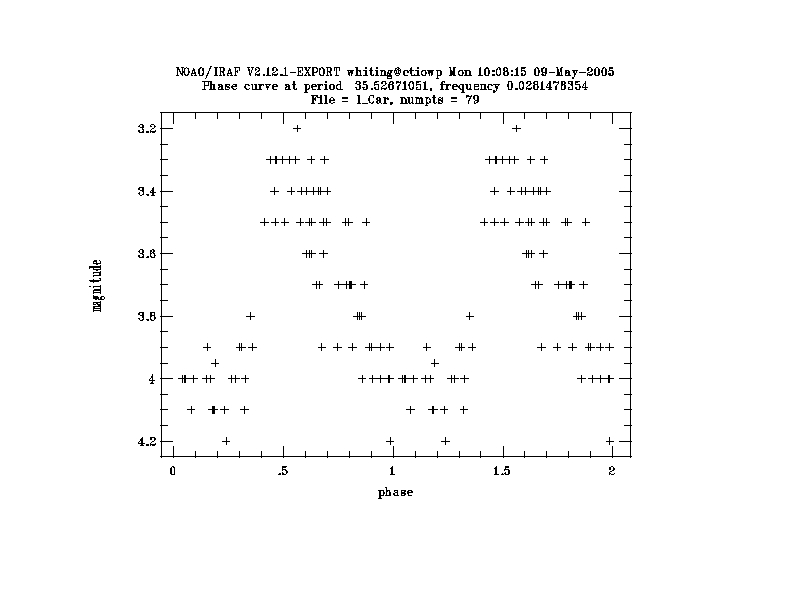
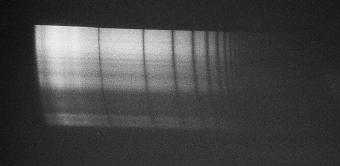
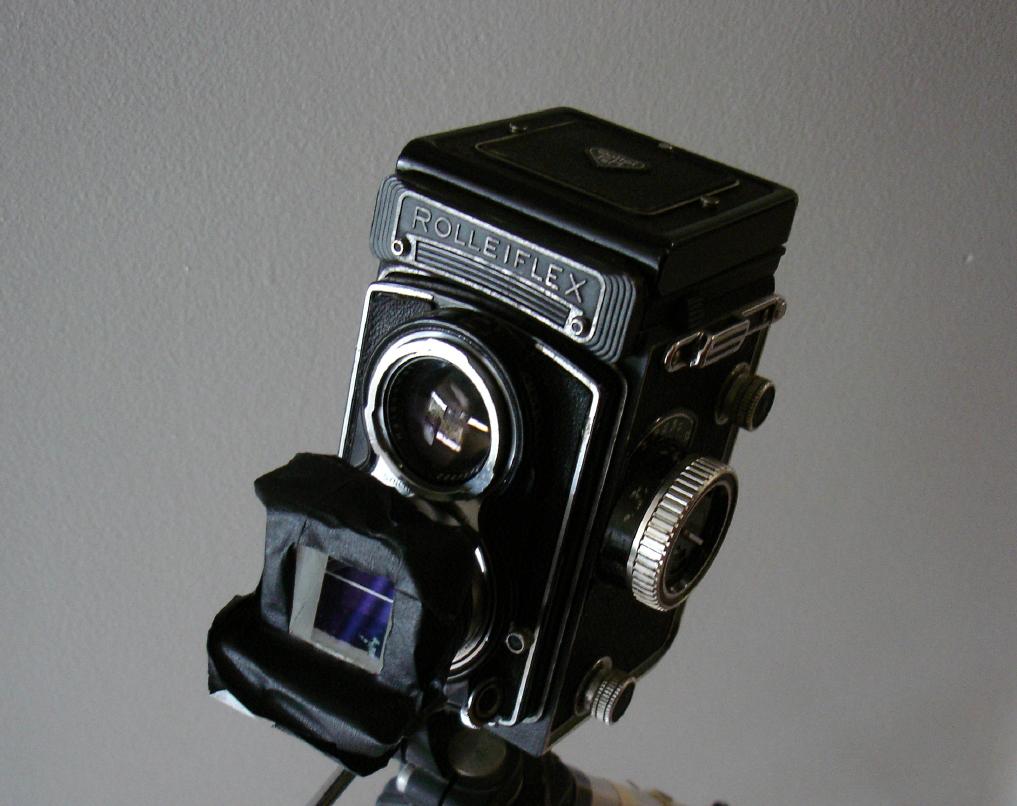
Sometimes I see what I can do in the way of astronomy with the very least expenditure and lowest sophistication in the way of equipment. The resuts can be interesting, or even useful.
| An improvised spectrograph led to insight into Man-Made Lights and the troubles they can cause for astronomers. I also employed the instrument at the 1999 solar eclipse, taking this picture of the sun during totality. The red, green and blue stretched-out blobs show the spectral sensitivity of the three layers of the color film to the continuum solor corona; superimposed on them are the chromospheric emission lines of hydrogen, helium, calcium and (twelve-times ionized) iron. I can make out nine emission lines on the original print. (Click on the pictures to see them better.) The blue lines at the far end are out of focus, I believe, because the focal plane of the improvised system was slightly tipped. |  |
 |
Another result of just putting a prism in front of the camera: here is a star-trail spectrum of Sirius, on black-and-white film (so you can't see the colors, but there aren't different blobs of dye to disturb you). The curve of the image has to do with the optics of the system. The dark lines are the important part: they come from hydrogen in the star's atmosphere. So with nothing more than a camera and a prism you can tell what a star is made of. |
| Here is the fantastically complex, hideously expensive instrument used for the last picture (the set-up for the eclipse picture was similar). Ignore the details of the archaic twin-lens reflex; you can use just about any camera that you happen to have lying about. The prism is stuck into a carved-out piece of styrofoam to hold it in place, and the the latter is taped into the lens shade. Unfortunately, the prism refracts the light through a significant angle, so the viewing lens sees nothing like what the taking lens sees. A single-lens reflex or digital camera is easier to point. Details of focus and aiming were done by trial and error (though the focus shouldn't be much different from infinity). Total cost exclusive of camera, maybe fifteen dollars. | 
|
Below are two multiple-exposure pictures of lunar eclipses. On the left, in November 2003 I took a one-second exposure every fifteen minutes from Quebrada de Talca (just east of La Serena, Chile), using a 200mm telephoto lens. The sequence starts at the upper right and goes right to left, up to down, with a background picture of the view to the north. On the right, I tried to capture the reddish tint of the eclipsed Moon with color film and a longer exposure (the sequence here goes left to right, up to down), in October of 2004. There were thin clouds at the beginning and end, which helped to wash out the partially-eclipsed Moon.
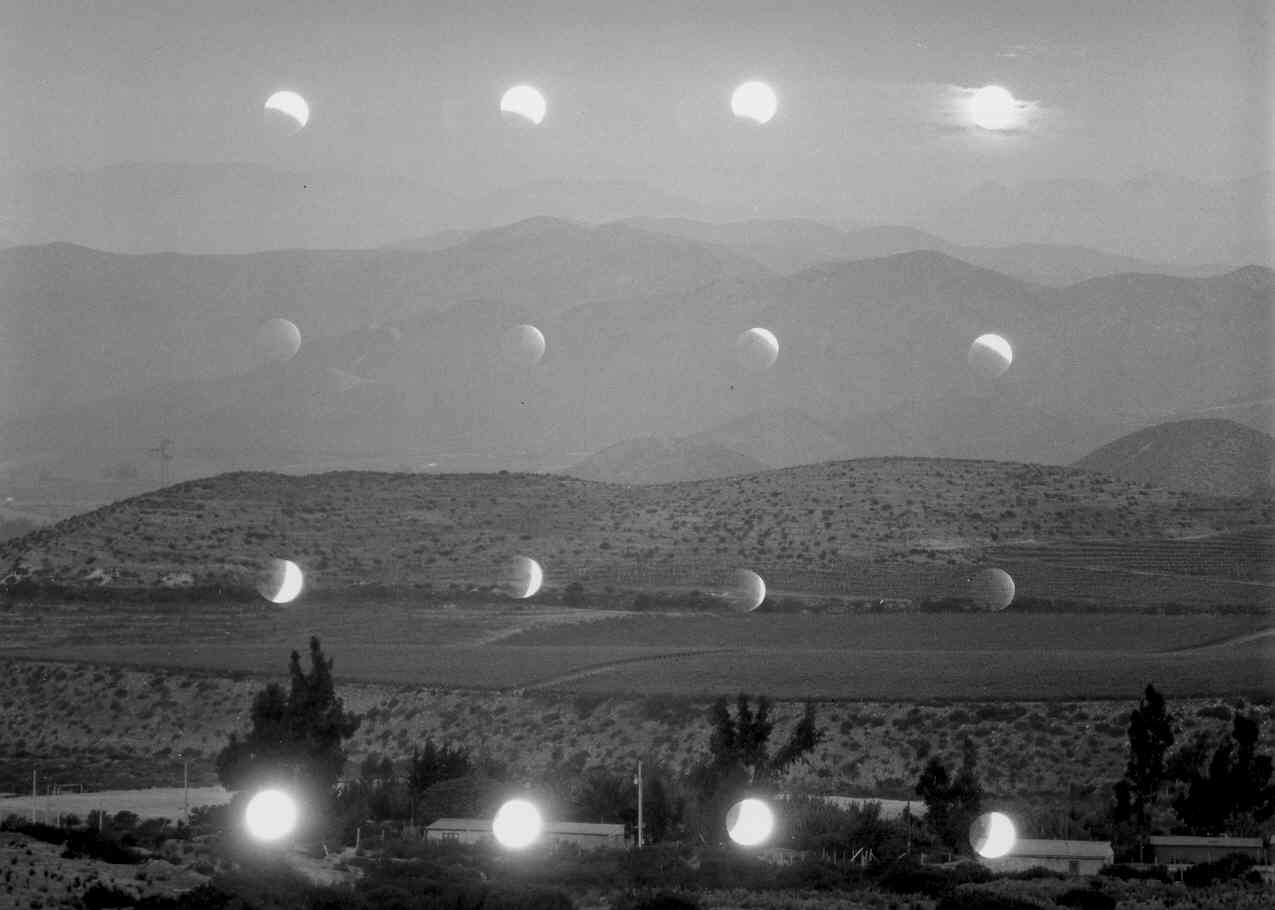 |
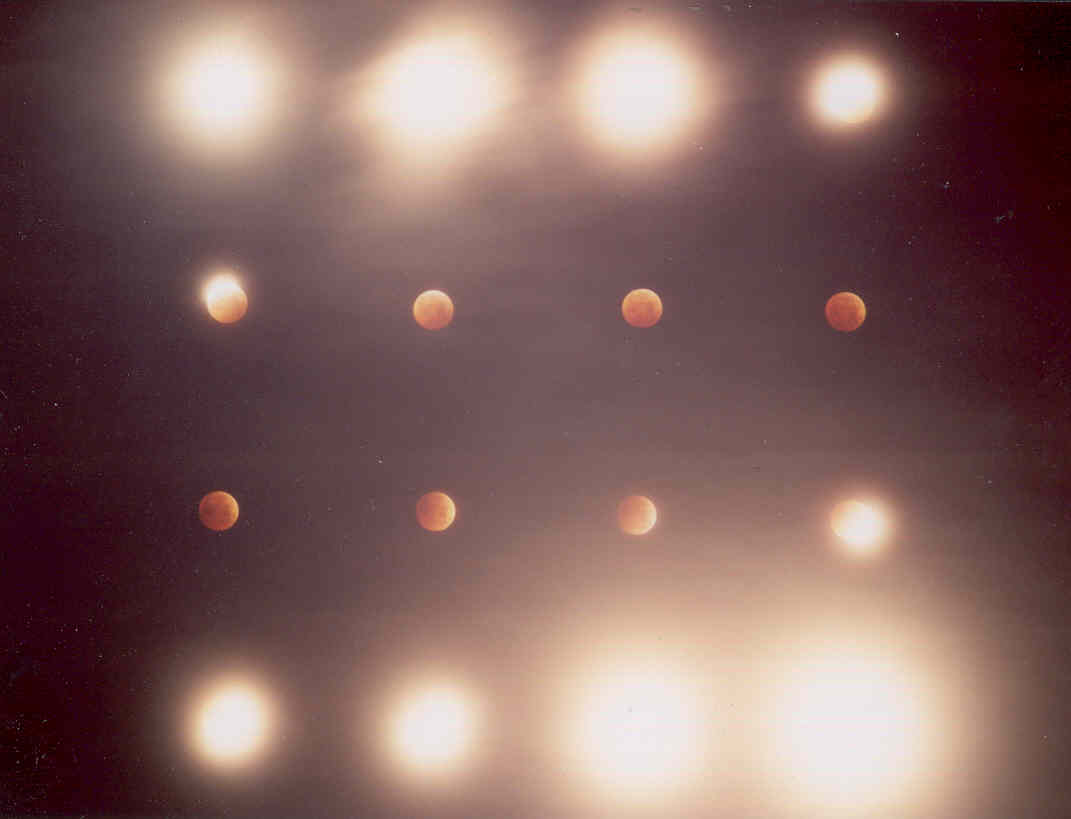 |
The Cepheid variable star l Carinae (that's the lower-case letter "el") is bright enough to see without any optical aid, and varies enough to detect easily by comparing it with nearby stars (using a chart from the American Association of Variable Star Observers ). Taking many months of my own naked-eye estimates and using an IRAF period-finding routine, I get the following plot. It shows the 35.5 day period plainly, as well as an accuracy in measurement of between 0.1 and 0.2 magnitudes.
